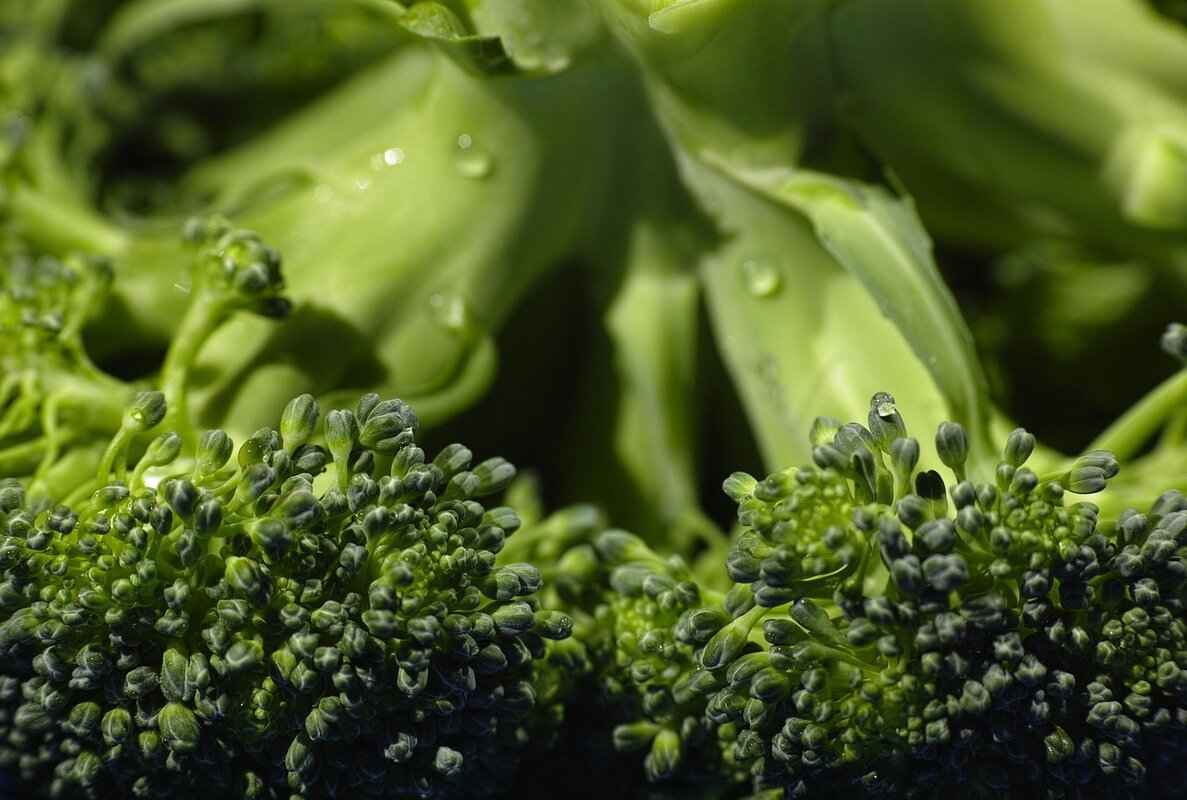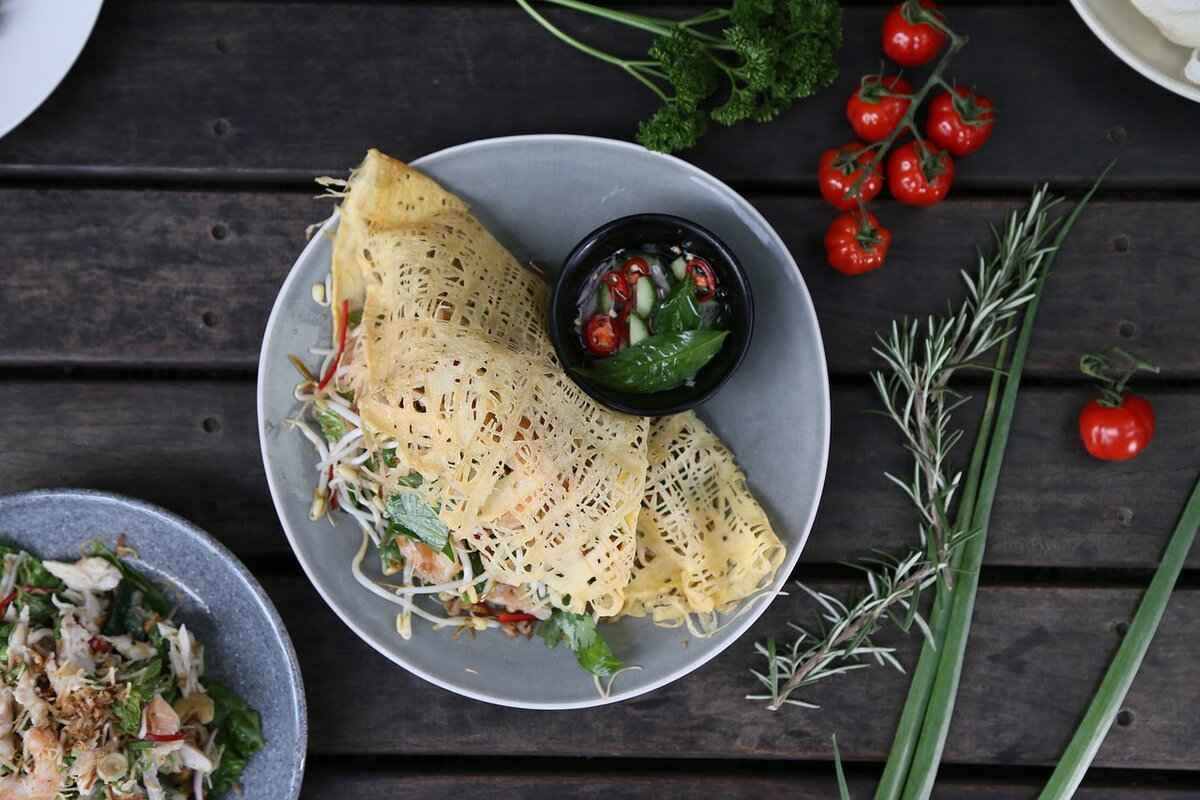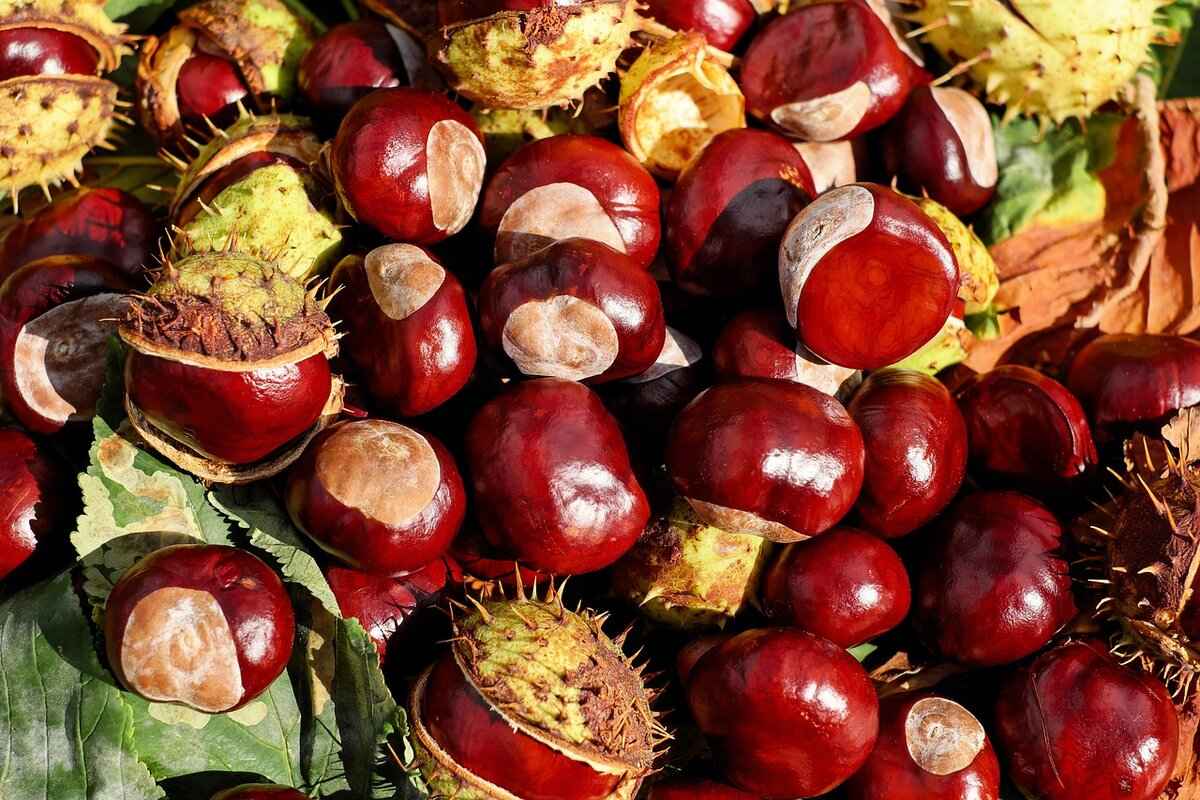Navratri is a vibrant festival celebrated across India, dedicated to the worship of the goddess Durga. During this nine-day festival, many devotees observe fasting, which involves consuming specific traditional foods. This article delves into the traditional foods consumed during Navratri fasting, highlighting their significance, nutritional value, and popular recipes, ensuring a fulfilling and spiritually enriching experience.
Understanding the essential ingredients used in Navratri fasting foods is crucial for preparing authentic and nutritious dishes. Common ingredients include:
- Sabudana (tapioca pearls)
- Kuttu (buckwheat flour)
- Singhara (water chestnut flour)
- Potatoes
- Fruits and vegetables that are allowed during fasting
These ingredients not only align with the spiritual significance of the festival but also provide essential nutrients to maintain energy levels.
This section outlines recipes for popular Navratri dishes, complete with step-by-step instructions:
- Sabudana Khichdi: A savory dish made with soaked sabudana, peanuts, and spices.
- Kuttu Ki Roti: A flatbread made from buckwheat flour, typically served with yogurt or a side of vegetables.
Sabudana Khichdi is a staple during Navratri. To prepare it, soak sabudana overnight, drain, and sauté with peanuts, green chilies, and cumin seeds. The dish is not only delicious but also rich in carbohydrates, providing energy throughout the fasting period.
Exploring different variations of Sabudana Khichdi can enhance your fasting experience. Some popular variations include:
- Sabudana Khichdi with Dahi: Served with yogurt for added flavor and nutrition.
- Spicy Sabudana Khichdi: Incorporating more spices for those who enjoy a kick.
Serving suggestions can elevate the dining experience. Pair Sabudana Khichdi with:
- Fresh coriander for garnish
- Chutneys made from mint or coconut
Kuttu Ki Roti is another popular dish during Navratri fasting. To make it, knead kuttu flour with water, roll it out, and cook on a hot griddle. This dish is gluten-free and packed with nutrients, making it a healthy option during fasting.
Exploring the nutritional aspects of traditional fasting foods helps in understanding their role in maintaining health and energy during the nine-day festival. Ingredients like sabudana and kuttu provide essential vitamins and minerals, while also being easy to digest.
The foods consumed during Navratri are designed to offer sustained energy. For instance, the complex carbohydrates in sabudana and kuttu release energy slowly, keeping you energized throughout the day.
While fasting can have benefits, it’s essential to be aware of potential health risks. Dehydration and nutrient deficiencies can occur if not properly managed. It’s advisable to consume plenty of water and include a variety of allowed foods to mitigate these risks.
Enhancing the fasting experience involves not just food but also mindfulness and spiritual practices. Engaging in daily prayers, meditation, and creating a peaceful environment can significantly enrich your observance of Navratri.
Mindfulness can deepen the spiritual experience of fasting. Techniques such as meditation, yoga, and focused breathing can help you stay connected to the spiritual essence of the festival.
Setting up a fasting-friendly environment can enhance your experience. Consider decluttering your space, adding spiritual decorations, and incorporating calming elements like candles or incense to create a conducive atmosphere for reflection and devotion.

What Are the Key Ingredients in Navratri Fasting Foods?
During the vibrant festival of Navratri, many devotees observe fasting as a means of spiritual cleansing and devotion. Understanding the essential ingredients used in Navratri fasting foods is crucial for preparing authentic and nutritious dishes that resonate with the festival’s spiritual significance. These ingredients not only adhere to fasting guidelines but also offer various health benefits, ensuring that devotees maintain their energy levels throughout the nine days of celebration.
Navratri fasting foods are characterized by their simplicity and adherence to specific dietary restrictions. The following are some of the key ingredients commonly used in these dishes:
- Sabudana (Tapioca Pearls): A staple during fasting, sabudana is rich in carbohydrates and provides a quick source of energy. It’s often used in dishes like Sabudana Khichdi.
- Kuttu (Buckwheat Flour): This gluten-free flour is packed with nutrients and is a popular choice for making Kuttu Ki Roti. It helps maintain energy levels while being easy to digest.
- Singhara (Water Chestnut Flour): Often used in sweets and snacks, singhara flour is low in calories and high in potassium, making it a healthy option during fasting.
- Potatoes: A versatile ingredient, potatoes are used in various fasting dishes. They are rich in carbohydrates and help in sustaining energy.
- Fruits: Fresh fruits like bananas, apples, and pomegranates are consumed for their natural sugars, vitamins, and minerals, providing essential nutrients during fasting.
- Milk and Dairy Products: These are excellent sources of protein and calcium. They can be consumed in various forms, such as in smoothies or as part of sweets.
- Spices: Commonly used spices like cumin, black pepper, and rock salt (sendha namak) enhance the flavors of fasting foods while adhering to dietary restrictions.
By incorporating these ingredients, devotees can create a variety of dishes that not only satisfy their hunger but also align with the spiritual essence of Navratri. Understanding the nutritional value of these ingredients enables individuals to maintain a balanced diet while honoring their fasting commitments.
Moreover, the preparation of these dishes often involves traditional methods that have been passed down through generations, adding to the authenticity and cultural significance of the meals. For instance, Sabudana Khichdi is made by soaking sabudana overnight, followed by sautéing it with peanuts, potatoes, and spices, creating a delicious and fulfilling dish.
As we explore the significance and nutritional benefits of these ingredients, we find that they play a vital role in sustaining energy levels and supporting overall health during the festival. By understanding the essence of these fasting foods, devotees can enhance their spiritual experience while enjoying delectable meals that nourish both the body and soul.

How to Prepare Popular Navratri Fasting Dishes?
During the sacred festival of Navratri, many devotees observe fasting as a means of spiritual cleansing and devotion. This period is characterized by the consumption of specific foods that are not only nutritious but also adhere to traditional fasting guidelines. Here, we delve into how to prepare some of the most popular Navratri fasting dishes, allowing you to create delicious meals that honor the essence of this auspicious occasion.
Preparing traditional Navratri dishes requires understanding the key ingredients and methods that align with fasting practices. Below are some popular recipes that are both easy to make and full of flavor.
Sabudana Khichdi is a beloved dish made from tapioca pearls, often enjoyed during Navratri. Here’s how to prepare it:
- Ingredients: 1 cup sabudana (tapioca pearls), 2 medium potatoes (boiled and diced), 1-2 green chillies (finely chopped), 1 tsp cumin seeds, salt to taste, and ghee for cooking.
- Preparation Steps:
- Soak the sabudana in water for about 4-5 hours until they swell.
- In a pan, heat ghee and add cumin seeds. Once they splutter, add the green chillies.
- Add the boiled potatoes and sauté for a few minutes.
- Now, add the soaked sabudana and salt. Stir gently and cook until the pearls turn translucent.
This dish is not only delicious but also provides a good amount of energy, making it perfect for fasting.
Kuttu Ki Roti is made from buckwheat flour and is gluten-free, making it a healthy option during fasting. Here’s how to make it:
- Ingredients: 1 cup kuttu flour, 1 medium potato (boiled and mashed), water, and a pinch of salt.
- Preparation Steps:
- In a bowl, mix the kuttu flour, mashed potato, and salt.
- Add water gradually to form a soft dough.
- Divide the dough into small balls and roll them out into flat discs.
- Cook on a hot tava (griddle) until both sides are golden brown.
Serve with a side of yogurt or green chutney for added flavor.
- Ingredients: 1 cup chopped fruits (like apples, bananas, and pomegranates), 1 tsp lemon juice, a sprinkle of black salt, and chaat masala to taste.
- Preparation Steps:
- In a mixing bowl, combine the chopped fruits.
- Add lemon juice, black salt, and chaat masala.
- Toss well and serve chilled.
This dish is not only refreshing but also provides essential vitamins and minerals to keep you energized during fasting.
By incorporating these recipes into your Navratri fasting menu, you can enjoy a variety of flavors while adhering to dietary restrictions. Each dish is designed to nourish both the body and spirit, enhancing your overall fasting experience.
What is Sabudana Khichdi and How is it Made?
Sabudana Khichdi is a beloved dish among devotees during the auspicious festival of Navratri. Known for its delicious taste and satisfying texture, it serves as a perfect meal for those observing fasts. This traditional dish, made primarily from tapioca pearls, is not only easy to prepare but also packed with essential nutrients, making it a staple choice for many.
The primary ingredients in Sabudana Khichdi include:
- Tapioca pearls (sabudana)
- Potatoes, diced
- Peanuts, roasted and crushed
- Green chilies, finely chopped
- Cumin seeds
- Salt, to taste
- Ghee or oil for cooking
- Coriander leaves, for garnish
Making Sabudana Khichdi is a straightforward process. Follow these steps for a delicious outcome:
1. Rinse 1 cup of sabudana under cold water until the water runs clear.2. Soak the rinsed sabudana in water for about 4-6 hours or overnight.3. Drain the excess water and let it sit for a few minutes.4. In a pan, heat 2 tablespoons of ghee or oil.5. Add 1 teaspoon of cumin seeds and let them splutter.6. Add the diced potatoes and sauté until they are soft.7. Stir in the soaked sabudana and mix well.8. Add crushed peanuts, chopped green chilies, and salt.9. Cook on low heat, stirring occasionally, until the sabudana becomes translucent.10. Garnish with chopped coriander leaves and serve hot.
Sabudana Khichdi is not just tasty; it also offers several nutritional benefits:
- High in carbohydrates: Sabudana is a great source of energy, making it ideal for fasting.
- Gluten-free: This dish is suitable for those with gluten intolerance.
- Rich in fiber: The addition of peanuts and potatoes adds dietary fiber, aiding digestion.
- Vitamins and minerals: Ingredients like potatoes provide essential vitamins, while peanuts add protein and healthy fats.
While the traditional recipe is delightful, there are variations to suit different tastes:
- Vegetable Khichdi: Add peas, carrots, or other vegetables for added nutrition.
- Spicy Khichdi: Incorporate more green chilies or even a dash of red chili powder for heat.
- Curried Khichdi: Add curry leaves and spices for a unique flavor profile.
To enhance your dining experience, consider these serving suggestions:
- Pair it with yogurt or raita for a cooling effect.
- Serve with a side of pickle or papad for added crunch.
- Garnish with lemon juice for a zesty flavor.
What Variations of Sabudana Khichdi Exist?
Sabudana Khichdi is a beloved dish during the Navratri festival, cherished for its lightness and ease of digestion. While the traditional version is delightful on its own, exploring different variations can truly enhance your fasting experience. Each variation brings unique flavors and textures, ensuring that your meals remain exciting and satisfying throughout the nine days of fasting.
- Spicy Sabudana Khichdi: For those who enjoy a little heat, adding green chilies and a sprinkle of black pepper can elevate the taste. This variation is perfect for those who want to invigorate their palate.
- Peanut Sabudana Khichdi: Incorporating crushed peanuts not only adds a delightful crunch but also boosts the nutritional value. Peanuts are rich in protein and healthy fats, making this khichdi more filling.
- Vegetable Sabudana Khichdi: Including finely chopped vegetables such as carrots, peas, or bell peppers can introduce a burst of color and nutrients. This variation is especially appealing for those looking to increase their vegetable intake during fasting.
- Coconut Sabudana Khichdi: Adding grated coconut lends a subtle sweetness and a tropical flair. This version is perfect for those who appreciate the rich taste of coconut in their dishes.
- Herbed Sabudana Khichdi: Experimenting with fresh herbs like coriander or mint can create a refreshing twist. These herbs not only enhance the flavor but also add a fragrant aroma.
Each of these variations maintains the essence of traditional Sabudana Khichdi while offering a unique spin that can cater to different taste preferences. By experimenting with these ingredients, you can create a diverse menu that keeps your meals exciting and fulfilling during the fasting period.
Moreover, the versatility of Sabudana Khichdi allows for easy customization. You can adjust the spices, add your favorite ingredients, or even try different cooking techniques, such as steaming instead of frying, to create a healthier version. This adaptability not only enhances the flavor but also aligns with individual dietary needs and preferences.
Incorporating these variations into your Navratri fasting menu can transform your experience, making it not just about abstaining from food but celebrating the joy of cooking and sharing. Whether you are preparing meals for yourself or for family and friends, these diverse options can make every meal a special occasion.
Ultimately, exploring different variations of Sabudana Khichdi is a delightful way to enhance your fasting experience. By embracing creativity in the kitchen, you can maintain the traditional essence of this cherished dish while enjoying the exciting flavors that each variation brings.
How to Serve Sabudana Khichdi for Maximum Enjoyment?
When it comes to celebrating Navratri, Sabudana Khichdi is not merely a dish; it is a symbol of devotion and celebration. This traditional meal, made primarily from tapioca pearls, is a favorite among those observing fasts during the festival. However, the experience of enjoying Sabudana Khichdi can be significantly enhanced through thoughtful serving suggestions.
The way food is presented can transform a simple meal into a feast for the senses. When serving Sabudana Khichdi, consider using vibrant plates or bowls that complement the dish’s natural colors. A well-presented meal not only looks appealing but also enhances the overall dining experience, making it feel more festive.
To further enhance your Sabudana Khichdi, consider serving it with various accompaniments:
- Raita: A cooling yogurt-based side dish can balance the spices and add a refreshing element.
- Peanut Chutney: This adds a crunchy texture and nutty flavor that pairs beautifully with the softness of the khichdi.
- Fried Green Chilies: For those who enjoy a spicy kick, fried green chilies can add heat and flavor.
Garnishing your Sabudana Khichdi can make it visually appealing and add layers of flavor. Consider the following garnishes:
- Cilantro: Freshly chopped cilantro adds a burst of color and freshness.
- Grated Coconut: A sprinkle of grated coconut can enhance the dish’s texture and sweetness.
- Lemon Wedges: A squeeze of lemon before eating can brighten the flavors and provide a zesty contrast.
For the best experience, serve Sabudana Khichdi warm. The warmth enhances the flavors and makes the dish more comforting. Timing is also crucial; serve it immediately after preparation to ensure it retains its texture and taste.
To make your dining experience unique, consider these creative serving ideas:
- Mini Bowls: Serve individual portions in mini bowls for a fun and elegant presentation.
- Banana Leaves: For a traditional touch, serve the khichdi on banana leaves, adding an earthy aroma.
- Skewered Veggies: Pair your khichdi with skewers of grilled vegetables for a delightful contrast in textures.
By thoughtfully considering how you serve Sabudana Khichdi, you can transform a simple meal into a remarkable dining experience that reflects the joy and spirit of Navratri. With the right presentation, garnishes, and accompaniments, this dish can be a centerpiece of your festive celebrations, making it not just a meal, but a delightful treat for everyone at the table.
What is Kuttu Ki Roti and How is it Made?
Kuttu Ki Roti is a cherished dish during the Navratri festival, particularly favored for its unique flavor and health benefits. Made from buckwheat flour, this gluten-free alternative is not only delicious but also packed with nutrients. Understanding how to prepare this dish can enhance your fasting experience, making it both satisfying and spiritually fulfilling.
Kuttu Ki Roti is made from buckwheat flour, which is rich in fiber, protein, and essential minerals. Unlike regular wheat flour, buckwheat is gluten-free, making it an excellent choice for those with gluten sensitivities. Additionally, this flour is known for its low glycemic index, which helps in maintaining stable blood sugar levels during fasting.
Preparing Kuttu Ki Roti is a simple yet rewarding process. Here’s a step-by-step guide:
- Ingredients:
- 1 cup buckwheat flour (kuttu ka atta)
- Water (as needed)
- Salt (to taste)
- Ghee or oil (for cooking)
- Instructions:
- In a mixing bowl, combine the buckwheat flour and salt.
- Gradually add water and knead to form a soft dough.
- Divide the dough into small balls.
- On a floured surface, roll each ball into a flat circle.
- Heat a tawa (griddle) and cook the roti on both sides until golden brown, applying ghee or oil as desired.
The health benefits of Kuttu Ki Roti make it an ideal choice during fasting:
- Rich in Nutrients: Buckwheat is a good source of antioxidants, vitamins, and minerals.
- Supports Digestion: The high fiber content aids in digestion and promotes gut health.
- Boosts Energy: Kuttu Ki Roti provides sustained energy, making it perfect for fasting days.
- Weight Management: Being low in calories and high in fiber, it helps in controlling hunger.
Serving Kuttu Ki Roti can elevate your meal experience. Here are some ideas:
- Pair it with yogurt or raita for a cooling effect.
- Serve with aloo (potato) curry or sabzi for a wholesome meal.
- Add a sprinkle of chaat masala for an extra zing.
In conclusion, Kuttu Ki Roti not only fits perfectly into the Navratri fasting diet but also brings a host of health benefits. Its preparation is straightforward, and its versatility allows it to be paired with various side dishes, making it a delightful addition to your festive meals.

What Nutritional Benefits Do Navratri Fasting Foods Offer?
During the nine-day festival of Navratri, devotees engage in fasting as a means to purify the body and soul. The nutritional benefits of traditional fasting foods play a crucial role in sustaining energy levels and promoting overall health. These foods are not only rich in essential nutrients but also designed to align with the spiritual significance of the festival.
Exploring the nutritional aspects of traditional fasting foods helps in understanding their role in maintaining health and energy during the nine-day festival. The fasting foods are primarily made from ingredients like buckwheat flour, sabudana (tapioca pearls), and a variety of fruits and vegetables. Each of these ingredients contributes unique health benefits.
- Buckwheat Flour (Kuttu): Buckwheat is a gluten-free grain that is high in fiber, protein, and essential minerals like magnesium and phosphorus. It helps maintain stable blood sugar levels and provides sustained energy, making it an excellent choice during fasting.
- Sabudana: Sabudana is rich in carbohydrates, which serve as a quick source of energy. It is also low in fat and contains small amounts of protein. The high carbohydrate content is beneficial for those engaging in intense spiritual practices during the festival.
- Fruits and Vegetables: Fresh fruits and vegetables consumed during Navratri are packed with vitamins, minerals, and antioxidants. They help in detoxifying the body and boosting the immune system, which is essential during fasting.
The foods consumed during Navratri are specifically chosen to support energy levels throughout the day. For instance, the combination of complex carbohydrates from buckwheat and the quick energy from sabudana provides a balanced intake that can keep fatigue at bay. Additionally, the hydration from fruits helps maintain energy and focus, critical for spiritual practices.
While fasting can offer numerous benefits, it is essential to be aware of potential health risks. Prolonged fasting without adequate nutrition can lead to deficiencies. To mitigate these risks, it is advisable to:
- Ensure a balanced intake of nutrients by including a variety of fasting foods.
- Stay hydrated by drinking plenty of water and consuming hydrating fruits.
- Listen to your body; if you feel weak or unwell, consider breaking the fast.
By understanding the nutritional benefits of traditional fasting foods, devotees can not only enhance their spiritual experience but also maintain their physical well-being throughout Navratri. Incorporating a diverse range of ingredients ensures that the body receives the necessary nutrients to thrive during this sacred time.
How Do These Foods Support Your Energy Levels?
Navratri is a significant festival in India, celebrated with great enthusiasm and devotion. During this nine-day celebration, many devotees observe fasting, consuming specific foods that are not only spiritually significant but also designed to provide sustained energy. Understanding how these foods support energy levels can enhance the fasting experience and ensure that one remains active and alert throughout the festivities.
The foods consumed during Navratri are rich in nutrients that help maintain energy levels. Key ingredients include:
- Sabudana (Tapioca Pearls): Rich in carbohydrates, sabudana is a popular choice during fasting. The high starch content provides a quick energy boost, making it ideal for those who need to stay active.
- Kuttu (Buckwheat): Unlike regular wheat, kuttu is gluten-free and packed with protein and fiber. It helps in maintaining stable blood sugar levels, preventing energy crashes.
- Singhara (Water Chestnut): This ingredient is low in calories but high in nutrients, offering a good source of energy without the heaviness.
- Fruits and Nuts: Incorporating fruits like bananas and nuts such as almonds can provide essential vitamins and minerals, along with healthy fats that sustain energy levels.
The combination of complex carbohydrates, proteins, and healthy fats in Navratri foods plays a crucial role in energy management. For instance, complex carbohydrates found in kuttu and sabudana release energy slowly, preventing sudden spikes and drops in blood sugar. This steady release of energy is essential for keeping fatigue at bay during the long hours of fasting and worship.
Moreover, the inclusion of fiber in these foods aids in digestion, ensuring that the body efficiently absorbs nutrients. Foods like kuttu and singhara are high in fiber, which not only supports digestive health but also contributes to a feeling of fullness, reducing the temptation to snack on non-fasting items.
In addition to providing energy, the foods consumed during Navratri offer various health benefits. For example, the antioxidants present in fruits and nuts help combat oxidative stress, which can be heightened during fasting. Furthermore, these foods often contain essential minerals like magnesium and potassium that support muscle function and prevent cramps, especially important for those engaging in physical activities during the festival.
To maximize the energy benefits of Navratri foods, consider the following tips:
- Hydration: Drink plenty of water or coconut water to stay hydrated, as dehydration can lead to fatigue.
- Balanced Meals: Aim for a balance of carbohydrates, proteins, and fats in each meal to ensure sustained energy.
- Mindful Eating: Pay attention to portion sizes and eat slowly to allow your body to signal when it is full, preventing overeating.
In conclusion, the foods consumed during Navratri are thoughtfully chosen to provide not just spiritual nourishment but also physical vitality. By understanding the role of these ingredients, devotees can enhance their fasting experience, ensuring they remain energized and focused throughout the festival.
Are There Any Health Risks Associated with Fasting?
Fasting is often embraced for its spiritual and health benefits, particularly during festivals like Navratri. However, it is crucial to recognize that there can be health risks associated with fasting practices. This section aims to provide insights into these risks and offers strategies to mitigate them effectively.
While fasting can promote detoxification and enhance spiritual connection, it may also lead to various health issues if not approached carefully. Some common risks include:
- Dehydration: Prolonged fasting without adequate fluid intake can lead to dehydration, causing fatigue, headaches, and dizziness.
- Nutritional Deficiencies: Extended periods of fasting may result in a lack of essential nutrients, impacting overall health.
- Low Blood Sugar Levels: Insufficient food intake can lead to hypoglycemia, resulting in symptoms like weakness, irritability, and confusion.
- Digestive Issues: Sudden reintroduction of food after a fasting period can cause digestive discomfort or distress.
To ensure a safe and beneficial fasting experience, consider the following strategies:
- Stay Hydrated: Drink plenty of water and herbal teas during non-fasting hours to maintain hydration levels.
- Plan Balanced Meals: Incorporate a variety of nutrient-dense foods during meals to avoid deficiencies. Foods rich in fiber, vitamins, and minerals should be prioritized.
- Monitor Blood Sugar Levels: If you have a history of blood sugar issues, regularly check your levels to avoid hypoglycemia.
- Gradual Food Reintroduction: After fasting, gradually reintroduce food to allow your digestive system to adjust without discomfort.
Fasting may not be suitable for everyone. Individuals with certain health conditions, such as:
- Diabetes: Those with diabetes should consult a healthcare professional before fasting.
- Pregnant or Breastfeeding Women: Nutritional needs are heightened during these periods, making fasting potentially harmful.
- Individuals with Eating Disorders: Fasting can exacerbate unhealthy eating patterns.
Consulting a healthcare professional is vital for personalized advice.
Fasting can be a fulfilling practice when done mindfully. By understanding the potential health risks and implementing strategies to mitigate them, you can enjoy the spiritual and physical benefits of fasting. Remember to listen to your body and seek professional guidance when necessary.

How to Make Your Navratri Fasting Experience More Enjoyable?
Fasting during Navratri is not just about abstaining from food; it is a time for spiritual reflection, mindfulness, and personal growth. Enhancing this experience can lead to a more fulfilling observance of the festival. Here are some tips to help you make the most out of your Navratri fasting journey.
Incorporating mindfulness into your fasting practices can significantly deepen your spiritual connection. Mindfulness involves being present in the moment and fully engaging with your thoughts and feelings. Here are some techniques to practice mindfulness during Navratri:
- Meditation: Start your day with a few minutes of meditation. Focus on your breath and set your intentions for the day.
- Gratitude Journaling: Keep a journal where you write down things you are grateful for each day. This practice can enhance positivity and spiritual awareness.
- Mindful Eating: When you break your fast, eat slowly and savor each bite. This not only enhances the flavor but also connects you to the food’s spiritual significance.
Setting up a fasting-friendly environment can significantly enhance your spiritual experience during Navratri. Here are practical tips to create a conducive atmosphere:
- Decorate Your Space: Use flowers, lights, and traditional decorations to create a festive atmosphere. This not only uplifts your spirits but also reminds you of the festival’s significance.
- Limit Distractions: Reduce distractions by turning off electronic devices or limiting social media. This allows for more time for reflection and devotion.
- Organize a Prayer Corner: Set up a dedicated space for prayer and meditation. Include images of deities, candles, and incense to create a sacred ambiance.
Engaging in various activities can deepen your connection to the spiritual essence of Navratri. Consider the following:
- Participate in Community Events: Join local celebrations or community gatherings. This fosters a sense of belonging and shared devotion.
- Practice Yoga: Incorporating yoga into your daily routine can enhance both physical and spiritual well-being. Focus on poses that promote grounding and balance.
- Read Spiritual Texts: Dedicate time to read scriptures or books that inspire you spiritually. This can provide insights and deepen your understanding of the festival’s significance.
While fasting is a spiritual practice, it is essential to maintain your physical health. Here are some tips:
- Stay Hydrated: Drink plenty of water during non-fasting hours. Hydration is crucial for maintaining energy levels.
- Choose Nutritious Foods: When breaking your fast, opt for foods that are rich in nutrients. Incorporate fruits, nuts, and traditional vrat dishes to ensure you get the necessary energy.
- Listen to Your Body: Pay attention to how your body feels during fasting. If you experience discomfort or fatigue, consider adjusting your fasting practices.
By incorporating these practices into your Navratri fasting experience, you can create a more enriching and fulfilling spiritual journey. Embrace the essence of the festival through mindfulness, community, and self-care, ensuring that your observance is not only about food but also about spiritual growth and connection.
What Role Does Mindfulness Play in Fasting?
During the sacred festival of Navratri, fasting is not merely a physical act of abstaining from food; it is a profound spiritual journey. Mindfulness plays a pivotal role in enhancing this journey, allowing devotees to connect more deeply with their spirituality and the essence of the festival. This section delves into various techniques that can help you incorporate mindfulness into your daily practices during Navratri, enriching your fasting experience.
Mindfulness involves being fully present and engaged in the moment, which can significantly deepen your spiritual experience during fasting. By practicing mindfulness, you can cultivate a sense of awareness of your thoughts, feelings, and bodily sensations, making your fasting more meaningful.
- Daily Meditation: Set aside a few minutes each day for meditation. Focus on your breath, observe your thoughts, and let them pass without judgment. This practice can help center your mind and prepare you spiritually for the day ahead.
- Mindful Eating: When you break your fast, do so with intention. Savor each bite, appreciate the flavors, and acknowledge the nourishment you are receiving. This practice can transform your meals into a sacred ritual.
- Gratitude Journaling: Each day, write down what you are grateful for. This can include your experiences during fasting, the food you consume, and the spiritual insights you gain. Gratitude fosters a positive mindset and enhances your connection to the divine.
- Prayer and Affirmations: Incorporate prayers or affirmations into your daily routine. These can help you focus your intentions and deepen your spiritual connection, making fasting more than just a physical challenge.
- Nature Walks: Spend time in nature, observing the beauty around you. This practice encourages mindfulness and allows you to reflect on the spiritual significance of Navratri in a serene environment.
Engaging in mindfulness during your fasting period can lead to numerous benefits:
- Enhanced spiritual connection- Improved emotional well-being- Increased self-awareness- Greater appreciation for food and nourishment- Reduced stress and anxiety
To further enhance your mindfulness practice during Navratri, consider creating an environment that promotes tranquility and focus. Here are some tips:
- Designate a Sacred Space: Create a small area in your home for meditation and prayer. Decorate it with items that inspire you, such as candles, flowers, or images of deities.
- Limit Distractions: Reduce noise and visual distractions in your environment. This can help you concentrate better during your mindfulness practices.
- Incorporate Spiritual Symbols: Use symbols that resonate with you, such as mandalas or yantras, to remind you of your spiritual intentions.
By integrating mindfulness into your fasting practices during Navratri, you can transform your experience from a simple dietary restriction into a profound spiritual journey. Embrace these techniques to deepen your connection with yourself and the divine, making this festival a truly enriching experience.
How to Create a Fasting-Friendly Environment?
Creating a fasting-friendly environment is essential for enhancing your spiritual journey during Navratri. This sacred period is not only about abstaining from certain foods but also about fostering a space that promotes reflection, devotion, and mindfulness. Here are some practical tips to help you set up such an environment:
- Designate a Sacred Space: Choose a specific area in your home where you can engage in spiritual practices. This could be a corner with an altar, a small room, or even a quiet outdoor space. Make it a place where you feel comfortable and connected.
- Declutter Your Surroundings: A clean and organized space can significantly impact your mental state. Remove distractions and unnecessary items that may interfere with your focus during fasting.
- Add Spiritual Elements: Decorate your space with items that resonate with your spiritual beliefs. This could include images of deities, candles, or flowers. These elements can create a peaceful atmosphere conducive to meditation and prayer.
- Create a Fasting Journal: Keep a journal in your fasting space where you can document your thoughts, feelings, and experiences. Writing can help deepen your reflection and provide insights into your spiritual journey.
- Incorporate Natural Elements: Bringing nature indoors can enhance your environment. Consider adding plants or flowers, which can uplift the space and provide a sense of tranquility.
- Use Calming Scents: Aromatherapy can play a significant role in creating a peaceful atmosphere. Use essential oils or incense that promote relaxation and clarity, such as lavender or sandalwood.
- Set a Routine: Establish a daily routine that includes time for prayer, meditation, or yoga in your designated space. Consistency can help reinforce the sacredness of the environment.
- Limit Digital Distractions: During fasting, it’s essential to minimize distractions from electronic devices. Consider turning off notifications or setting specific times to check your phone or computer.
By implementing these tips, you can create a nurturing environment that supports your fasting experience. This space will serve as a sanctuary for spiritual reflection, allowing you to connect more deeply with your practices and intentions during Navratri.
Remember, the goal is to cultivate a space that resonates with your spiritual aspirations and helps you maintain focus during your fasting period. Whether it’s through physical space, mental clarity, or emotional peace, a well-prepared environment can significantly enhance your overall experience during this sacred festival.
Frequently Asked Questions
- What foods can I eat during Navratri fasting?
During Navratri, you can enjoy a variety of traditional dishes like Sabudana Khichdi, Kuttu Ki Roti, and Singhare Ke Atte Ka Halwa. These foods are not only delicious but also spiritually significant, providing the energy you need for fasting.
- How can I ensure I get enough nutrients while fasting?
To maintain your nutrient intake, focus on incorporating ingredients like potatoes, fruits, and nuts. These foods are rich in vitamins and minerals, helping you stay energized throughout the nine days of fasting.
- Is it safe to fast for all nine days?
Fasting for nine days can be safe for many, but it’s crucial to listen to your body. If you feel weak or dizzy, consider modifying your fasting approach or consulting a healthcare professional for personalized advice.
- What role does mindfulness play in fasting?
Mindfulness during fasting enhances your spiritual connection and helps you focus on the purpose of the festival. Practices like meditation or prayer can deepen your experience and make fasting more meaningful.
- How can I create a fasting-friendly environment at home?
To create a fasting-friendly space, consider decluttering your area, adding spiritual decor, and setting aside a corner for meditation. This environment can help you stay focused and connected during your fasting journey.














